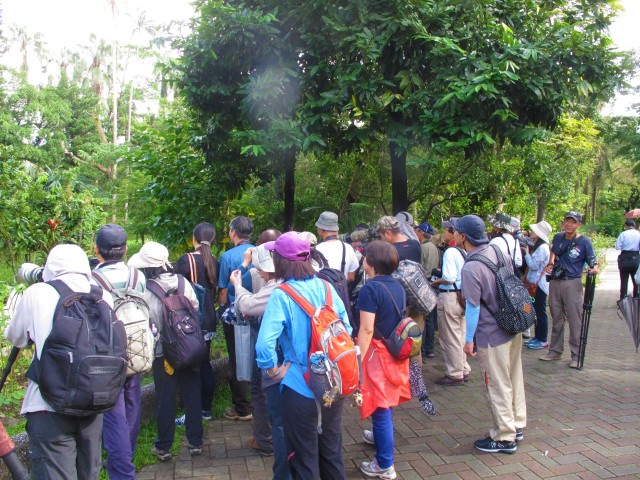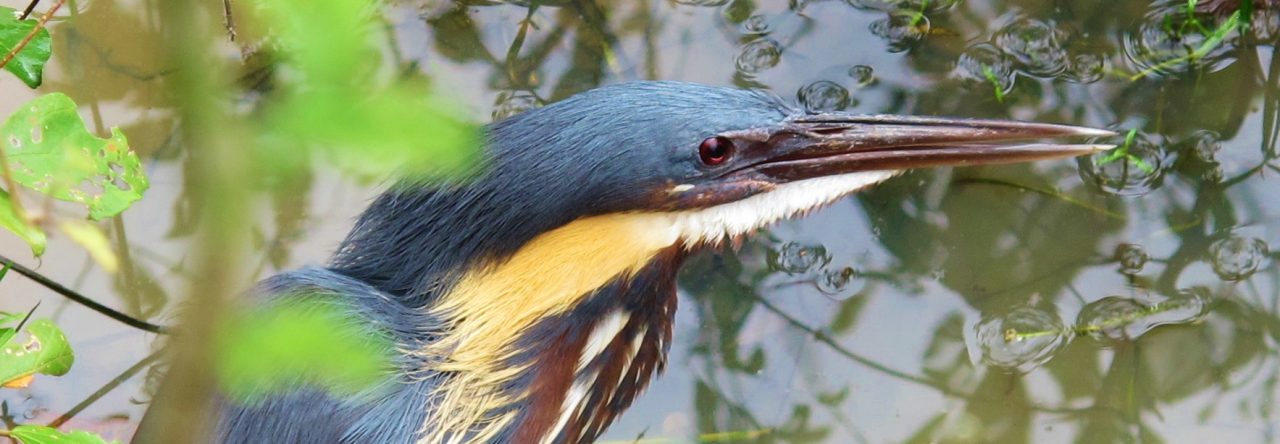
What better way to spend a mid-October weekend than on a British birders field trip to the far north-eastern corner of Taiwan, in the company of Steve M, Richard Foster and Dave Irving? We drove up with Richard on the Friday, arriving at Tianliaoyang around lunchtime to heavy rain, ideal for grounding some migrants but less than perfect for birders and their optics. Never mind – Tianliaoyang has to be one of the most aesthetically pleasing birding hotspots in Taiwan, with its rolling green hills and low-intensity agriculture, and despite the rain we saw some excellent birds during the afternoon including Middendorff’s Grasshopper Warbler, Dusky Thrush, Red-rumped Swallow, Chestnut-cheeked Starling, a flyover Forest Wagtail, and at least 10 Pechora Pipits. The latter species is a highly sought-after migrant in East Asia, whose entire population migrates through Taiwan – it is numerous for a short period in mid-October but it is hard to see on the ground and most records are of birds passing overhead in flight uttering their distinctive Grey Wagtail-like flight call.
The following day was even better. Mid-morning, halfway through a discussion about a possible Japanese Leaf Warbler we had seen earlier (which turned out not to be one), I noticed a warbler-like bird fly out of a patch of scrub and plunge into the grassland nearby. Thinking this to be odd behavior for an Arctic Warbler, I alerted the others, and closer views revealed what initially appeared to be ….. a pale Dusky Warbler? It took several seconds for the penny to suddenly drop – we were looking at a Common Chiffchaff of the tristis race (“Siberian” Chiffchaff), an extremely rare vagrant to East Asia. The identification of this bird proved straightforward – it was a cold pale grey above with only a hint of green on the primaries, clean white below, with an all-black bill and legs, plus an endearingly distinctive Chiffchaff habit of pumping its tail.
A true rarity on Taiwan, this was only the second or third national record, and the first “twitchable” mainland bird. The Chiffchaff unsurprisingly turned out to be the bird of the day – if not the year! – but it was amply supported by a nice flock of buntings including 6 Yellow-browed Buntings, 10 Little Buntings, and a huge and brutish juvenile Red-headed or Black-headed Bunting (most likely the latter). My elation (smugness?) at finding the Chiffchaff was dampened somewhat later in the morning, when I wrote off a couple of distant swifts as Fork-tailed Swift without looking at them closely enough, only for Steve to show me some photos later which clearly depicted Silver-backed Needletail!

After our epic Tianliaoyang visit, I had an hour to spare before heading back to Kaohsiung, so Dave and I went to the Botanical Gardens in the heart of downtown Taipei to check out the Northern Boobook, which had originally been found yesterday. Although the owl was fairly close, it was partly obscured by branches which made good clear photos impossible. Up to three Narcissus Flycatchers were also present, which I saw regularly enough at Qigu during October to almost relegate them to “list padder” status. Almost, but not quite …. the males of this species are simply stunning, and they certainly warranted the enormous amount of attention they were getting from the local bird photographers.
Elsewhere in October, Qigu continued its remarkable run until late in the month, with a Kamchatka Leaf Warbler finally confirmed in the coastal forest by sound recording (thanks Steve). This bird stayed for several days and offered close views on occasion, although it didn’t call as often as I would have liked! More satisfying were the three Long-billed Dowitchers I discovered in a flooded field along the Qigu embankment. Primarily a North American wader, a tiny population also breeds in extreme NE Asia, and this is presumably the source of the scattering of annual records in Taiwan.

I also enjoyed a Red-necked Phalarope at a small muddy pool in Tucheng. These diminutive birds breed in the high Arctic and winter far out to sea on tropical oceans – they rarely encounter humans and can therefore be delightfully approachable, as was the case with this individual:

Jenna and I took a non-birding weekend trip to Hualien and Taroko Gorge on the east coast in late October, with a couple of good “seen from the train” birds en route – Ring-necked Pheasant and Peregrine – and a handful of interesting species encountered during a scenic hike including two of the more tricky Taiwan endemics, Taiwan Partridge and Yellow Tit.

October ended with a change in the weather in the south – the arrival of cooler, sunny weather, north-easterly winds, and the unwelcome return of winter’s noxious air pollution. A trip out to Qigu on the final day of the month revealed little in the way of migration, but a noticeable arrival of the expected winter visitors including five duck species, Caspian Tern, and a huge increase in Black-faced Spoonbills and Pied Avocets. Barring any late typhoons, it seems as if migration is essentially finished in south Taiwan, so I will be turning my focus to mountain birding for the next couple of weeks.
2016 World Year List: 851
Taiwan Life List: 313
